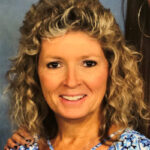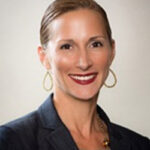
Congratulations to our 2023 Tax Transformers
2023 Tax Transformer Awards Grand Prize Winner
Labcorp– Drew Caterinicchio, CPA, Senior Tax Analyst and Wendi Murray, CPA, Domestic Tax Manager


Labcorp Uses Corptax and Alteryx to Eliminate All Manual Movement of Federal Adjustments
Calling Labcorp’s federal compliance process unwieldy qualifies for understatement of the year. Federal M adjustments were piled together in a massive Excel workbook – and each of their 80-plus entities had its own tab bogged down with hundreds of data points and surplus clutter.
Adding insult to injury, the labor-intensive worksheet was manually populated and too large to effectively manage and maintain – earning it the moniker The Beast.
Extensive documentation sitting on a network drive supported federal workpapers, but provided no direct line-of-sight. Without audit trails to tax return amounts, the team lost time arduously tracking down source data.
And when it came time to populate adjustments into Corptax after weeks of prep in Excel, amounts were entered manually, burning up more time.
Labcorp realized:
- Maintaining independent datasets in Excel and Corptax left stakeholders without a single source of truth
- Moving and managing huge volumes of data was unsustainable and stole time from data analytics and tax planning
- The more they manually moved data and reconciled datasets over late nights and weekends, the more likely they were to lose, alter, or misappropriate data – and miss errors
With countless moving parts, decentralized data, and questions leading Labcorp down rabbit holes, they decided to overhaul the process.
Solution
With Corptax doing its part to simplify the process, Labcorp wanted to streamline even further by incorporating Alteryx and aligning the data chain from SharePoint to Alteryx to Corptax. They built an Alteryx workflow to:
- Help identify critical supporting documents in SharePoint and bring them into one centralized workflow. These file names were ultimately carried through to the end Excel output ensuring they would always track back to supporting documentation.
- Perform the vast majority of calculations currently computed in Excel
- Create multiple output views to serve a variety of informational needs
- Import amounts directly into Corptax and Excel output simultaneously – making certain that data pushed into Corptax and offline Excel workpapers always matched
- Used the CSC Corptax® Connector for Alteryx to Import data into Corptax
- Provided streamlined summary and detail outputs to Excel—compressed and aggregated to remove clutter
- Validate automated adjustments computed in Corptax with offline expectations to correct any mistakes in mapping and to create a logic to be used in the provision process
LabCorp also used PowerQuery and SharePoint to create a check and balance system that removed any risk of returns being changed after finalization and before filing.
Results
Labcorp’s Alteryx workflow lets the team move all of their federal adjustments automatically. Now, all manual and calculated Corptax data flows directly into their workpapers and Corptax at the same time, ensuring accuracy and saving time spent reconciling and untangling complex chains of data.
Any variances are easily tracked down; clear documentation and visibility to source and consolidated detail furnish fast, complete support.
Huge time-savings creates space for preparers to look harder at the numbers. And newfound federal compliance efficiencies help team members start state compliance sooner. This year, state returns were filed several days before 10.15, even with significant time invested in analyzing numbers on the return.
All in all, the team now:
- Eliminates manual movement of federal M adjustments from sources to workpapers and Corptax
- Easily maintains 12 organized tabs, reduced from 80 overloaded tabs
- Finishes 3.5 days sooner than prior year with no more nights and weekends
- Saves hundreds of hours in prep and review time while building confidence in the work product
- Uses time-savings to increase value-added activities such as tax planning and business partnering
2023 Tax Transformer Awards Finalists
3M– Mary Beth Racca, USAC Tax Technology Specialist

3M Automates Depreciation and Saves 325 Hours
3M’s depreciation process posed multiple challenges for the team. They collected data from several sources including SAP, PeopleSoft, and Oracle; expansive Excel workbooks; and BNA Fixed Assets software.
Manually aggregating huge datasets and standardizing different formats cost the team valuable time. They lost more hours manually reconciling fixed asset data to the general ledger. And, they lacked an efficient process for importing data and adjustments into Corptax where Forms 4562 and 4797 would be auto-populated.
With so much moving, tracking, and analyzing data by hand, the process lacked oversight, posed risks to accuracy causing potential rework, and negatively affected staff morale.
Solution
The 3M team created a process improvement plan to:
- Generate book and tax fixed asset roll-forwards from source systems and compute resulting Schedule M adjustments for depreciation and gain/loss on fixed asset dispositions using Alteryx.
- Push data directly into Corptax from Alteryx via the CSC Corptax® Connector for Alteryx.
- Reduce the current 500-hour manual process for preparers and reviewers
- Improve overall accuracy and controls with respect to the general ledger and depreciation process
They executed the plan by first documenting and mapping existing processes through workpaper reviews and interviews with preparers.
Next, they developed Alteryx workflows to aggregate data from sources and produce fixed asset roll-forward schedules for book and tax that also computed related Schedule M adjustments.
And finally, they used the Corptax Connector for Alteryx to rapidly push Schedule M adjustments for book/tax depreciation and gain/loss differences directly into Corptax.
Results
3M declared the project a huge success. In the words of Tax Technology Specialist Mary Beth Racca,
“The ability to use Corptax Connectors was very valuable. We were able to push data through to forms and post the Schedule M adjustments for all relevant entities. We made any changes needed in seconds. The project helped us learn the Connector, and we apply it to a variety of other return applications.”
With the new process in place, 3M estimates a time-savings of:
- 325 hours (65%) compared to their manual process
They also point to significant improvements in quality control as they:
- Reduce manual touchpoints
- Automate reconciliation with the general ledger
- Efficiently reconcile return amounts back to the fixed asset roll-forward calculation
3M’s new depreciation process is repeatable, scalable, and runs in a fraction of the time with negligible risk. The experience helped the team identify further areas for process improvement, so automation benefits continue to accrue.
They also appreciate having more time to spend on value-adding initiatives and getting home before dark during busy season!
Chevron Corporation– Chi Li, Manager, Tax Technology and Systems

Chevron Leverages Corptax and Microsoft, Gaining Insights in Minutes vs. Weeks
Centralizing data in Corptax was a huge step forward — but Chevron’s data-sharing process limited access and relied on handling, moving, and refreshing data manually — leading to delays and mounting frustration.
A swift, seamless way to access an undisputed single source of truth and share it with decision-makers across the organization became a top priority.
Solution
The Chevron team set up direct and dynamic connections between Microsoft’s Cloud Platform and Corptax using CSC Corptax® Web Services API.
Next, they transformed data into real-time dashboards via Microsoft Power BI — and used Microsoft Power Automate to regularly refresh data — ensuring stakeholder dashboards imparted insights based on current information.
Results
By integrating Corptax API and Microsoft Power Automate functionality, Chevron overhauled their validation processes, calling the results “remarkable”.
With accuracy virtually guaranteed and a system tailored to Chevron’s vast needs, they remove substantial risk from provision, sourcing, tax basis calculations, and federal form filings.
Further, the transformation eliminates manual updates and ensures Tax-generated dashboards reflect the latest data.
Predefined thresholds within the dashboards streamline analysis and empower data-driven decisions, reducing a weeks-long review process to mere minutes.
In short, Chevron’s new automated data access and analytics method:
- Provides instant insights that used to take weeks
- Saves ~140 hours compared to manual routines
- Allows everyone, even non-Corptax users, to access current data in seconds
- Ensures the global tax team works with a single source of truth
Chevron isn’t stopping there. They’re poised to redefine additional workflows using their advanced digital platforms, including development of a mini data lake — all nurtured by Corptax data.
PepsiCo, Inc.– Jennifer Edwards, Director–Corporate Tax

PepsiCo, Inc. Cuts 320 Hours and $60K in Consulting Fees by Automating BEPS CbCR
PepsiCo’s team of two managed all Country-by-Country Reporting (CbCR) using Excel-based templates to collect and aggregate data coming in for 1000+ business units comprising 600 constituent entities across 90+ jurisdictions.
An inconsistent mix of responses in US GAAP and local STAT done by sector, country, and entity made performing sanity checks on the data next to impossible. They massaged the data in an Oracle database, manually pushed the data back into Excel, and then, back into Corptax.
By housing all their supporting BEPS CbCR data in Excel, they experienced limited visibility, confusion, and duplicated effort. This exposed PepsiCo to unnecessary risk and chewed up valuable time and energy.
Ultimately, Tax Director Jennifer Edwards asked, “Why are we collecting all this data when it’s already been collected?” So, they decided to replace their “old methodology” and compile CbC reporting using proven federal and US international return data in Corptax — and ultimately reuse that data for Global Minimum Tax (GMT) purposes.
Solution
After conferring with Corptax, PepsiCo implemented CSC Corptax® BEPS CbC. They launched their transformation in 2020 by first replicating offline as-filed calculations in Corptax, ensuring consistent account mapping and treatment between Corptax and their offline process. When they found discrepancies, they revised the tax data collection packages to account for changes going forward.
With prior-year issues resolved, they brought the process into the current year. They used CSC Corptax® Office POV to automatically pull CbCR Table 1 amounts from Corptax and when necessary, automatically push adjustments or modifications back in.
After filing the current year CbC report, they applied the same principles to GMT work. The team then used their US compliance and CbCR datasets — which already contained mapping incorporated during CbCR — for GMT planning. They compared offline results to Corptax results after ensuring all entities and accounts were correctly set up.
Results
Right off the bat, PepsiCo’s new process revealed missing and/or inconsistent data in templates provided by their widespread network of owners. For example, not all tangible assets or revenue accounts had been included.
Now, after running with the process for a year, the team measures savings of ~320 hours and $60,000 in unnecessary consulting fees. They eliminate error-prone offline calculations and risks related to manually moving data. Plus, the CbCR team relies on a single source of truth to ensure consistent treatment for all CbCR data instead of struggling with misaligned input they used to receive.
And as Jennifer Edwards says, “We built space to actually sit back and digest the data, create analytics, and get our international and domestic tax planners involved in the review process.”
On the GMT front, after running initial Corptax calculations parallel with offline calcs, the same jurisdictions were identified for the GMT Top-up Tax. As they continue to understand the intricacies of Pillar Two calculations, they will look at a more detailed implementation and review of GMT calculations and reporting.
Jennifer Edwards sums it up: “Because we leverage so much of our CbCR process for GMT, we’re ahead of the game and already evaluating safe harbors using our Corptax data.”
In short, the team:
- Saves ~320 hours by leveraging data already in Corptax
- Cuts $60,000 in outside consulting fees
- Ensures accurate, complete information on 600+ legal entities
- Ensures US compliance, BEPS CbC, and GMT data align
- Invests time-savings in understanding CbC data and creating year-over-year analytics for tax planner review
Reynolds Consumer Products – Scott Wickert, Sr. Tax Manager

Reynolds Files 15 Days Earlier than Last Year … One Person Down
Challenge
Established in 2020 after a spinoff, the still-new Reynolds Consumer Products team managed tax deliverables and special projects for their large, publicly held organization.
After successfully implementing Corptax the prior year, the four-member tax team found themselves down a person. They were still navigating the system, and management’s expectations were high: looking to them for information, participation in business decisions, and risk management.
One key area needing improvement: the team’s overlapping compliance and Q3 provision processes. Constantly switching back and forth cost the team valuable time and took them down to the wire.
Reynolds needed a way to maintain their standards with 25% fewer resources—while preserving as much work-life balance as they could.
Solution
Reynolds knew Corptax was the way to get more work done with a smaller staff. They resolved to use the system in new ways to drive productivity, support planning, and lay the groundwork for future efficiencies.
Reynolds calls Corptax its single source of truth, aptly naming it The Library. So, with that in mind, Reynolds identified four key areas to better leverage data in the Library:
- In the past, the team automated adjustments within Corptax and tested them against their own calculations. With many successful audits under their belt, they wanted to increase reliance on Corptax computations. That would eliminate a huge volume of redundant offline workpapers and time spent calculating and populating.
- They wanted to leverage data and computed amounts stored in Corptax for as many processes as possible vs. building workpapers from scratch. For example, pulling tax due by state as a starting point for estimates and extensions.
- They wanted to build space into year-end provision to dig deeper into the numbers. A more thoughtful approach to provision estimates would shorten the compliance process and minimize any return-to-provision adjustments.
- Knowing they could run scenarios in Corptax, and with Corptax data available for every year, they set up planning cases for items such as testing apportionment or filing changes … or whether to check a box on an entity. Come time for compliance season, they would better understand results and know what to expect.
Results
Overlapping compliance and provision processes are no longer an issue. The team filed compliance a full 15 days sooner than prior year allowing them to turn their attention in October solely to Q3—and with one less staff member to boot.
Centralized data gives them a full view of their federal and state return-to-provision as early as July, enabling them to review and communicate any noteworthy items to management with a long lead time. And because provision is prepared with compliance in mind, RTP adjustments are virtually immaterial.
Now the team:
- Uses 95% fewer offline workpapers
- Directly extracts estimate and extension payments with provision and payment data already in the system.
- Earns back time and control with multi-year RTP and the ability to turn RTP on and off with a click. For example, they turn on Canada in Q2 and the US in Q4, allowing them to simplify the process and ease administrative work.
- Prepares ahead for upcoming ASC 740 changes in state disclosures using the robust, detailed state ‘current and deferred’ provision module. As a result, they have line-of-sight to each state’s current and deferred impact on their tax rate well in advance.
Despite their reduced size, the team came through with high-quality and audit-passed work and gave leadership solid input — while maintaining the work-life balance they previously enjoyed.
Next up for Reynolds: looking at the CSC Corptax® Connector for Alteryx to eliminate even more workpapers.


